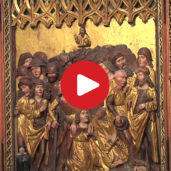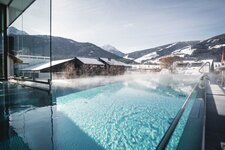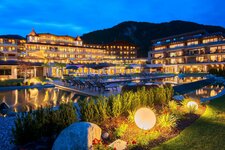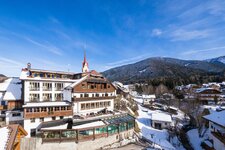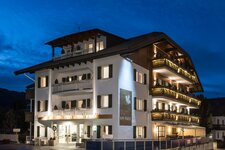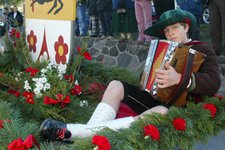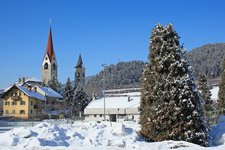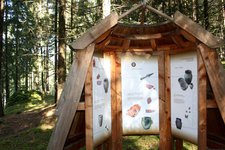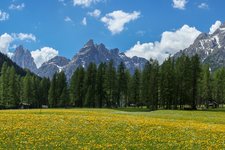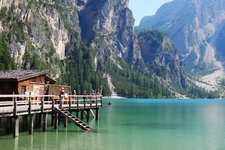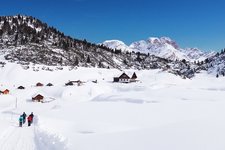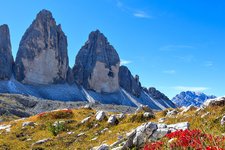Numerous findings dating back to the Roman Empire and Iron Age can be admired at the archaeological museum Mansio Sebatum
Image gallery: Archaeological museum Mansio Sebatum
The archaeological museum in San Lorenzo di Sebato reveals interesting details on past life. San Lorenzo di Sebato in the Val Pusteria is famous for having been home to a Noric tribe during the Iron Age, whereas under the Roman Empire it was an important transit station. The interactive installations of the museum are set up on three floors and take you on a time travel retracing the history of Mansio Sebatum before this commercially important place became a Roman station.
The findings dating back to the Iron Age and Roman Empire are exhibited in display cabinets and tell of an eventful past. The display on the first floor focuses on road construction and the origins of the Roman station, whereas the installations on the second floor are dedicated to daily life and economy at the time of the Roman station. The rich world of Roman Gods, popular beliefs, cemeteries and many other remains from Sebato are showcased on the third floor.
A visit to the museum can be concluded with a walk along the
Archaeological Trail which runs around the Castel Badia slope. This itinerary features panels which provide you with interesting information on the archaeological excavations carried out in this area. The museum is perfectly suitable for families and school children.
Contact info
- Via Josef Renzler / Josef-Renzler-Strasse 9 - 39030 - San Lorenzo di Sebato / St. Lorenzen
- +39 0474 538196
- info@mansio-sebatum.it
Opening times
Despite careful control we cannot guarantee the correctness of the provided data.
Admission
€ 5.00 adults
€ 3.50 groups (8 and more persons)
€ 3.00 students and civilian servicemen
€ 3.00 seniors 65+
€ 3.00 school classes
------------------------------
family ticket:
€ 10.00 2 adults with children up to 11 years
------------------------------
guided tour:
€ 1.00 per person (for school classes)
More information
The Mansio Sebatum Museum stays open from Monday to Saturday all year round, Sunday rest day. The museum is closed on public holidays.




